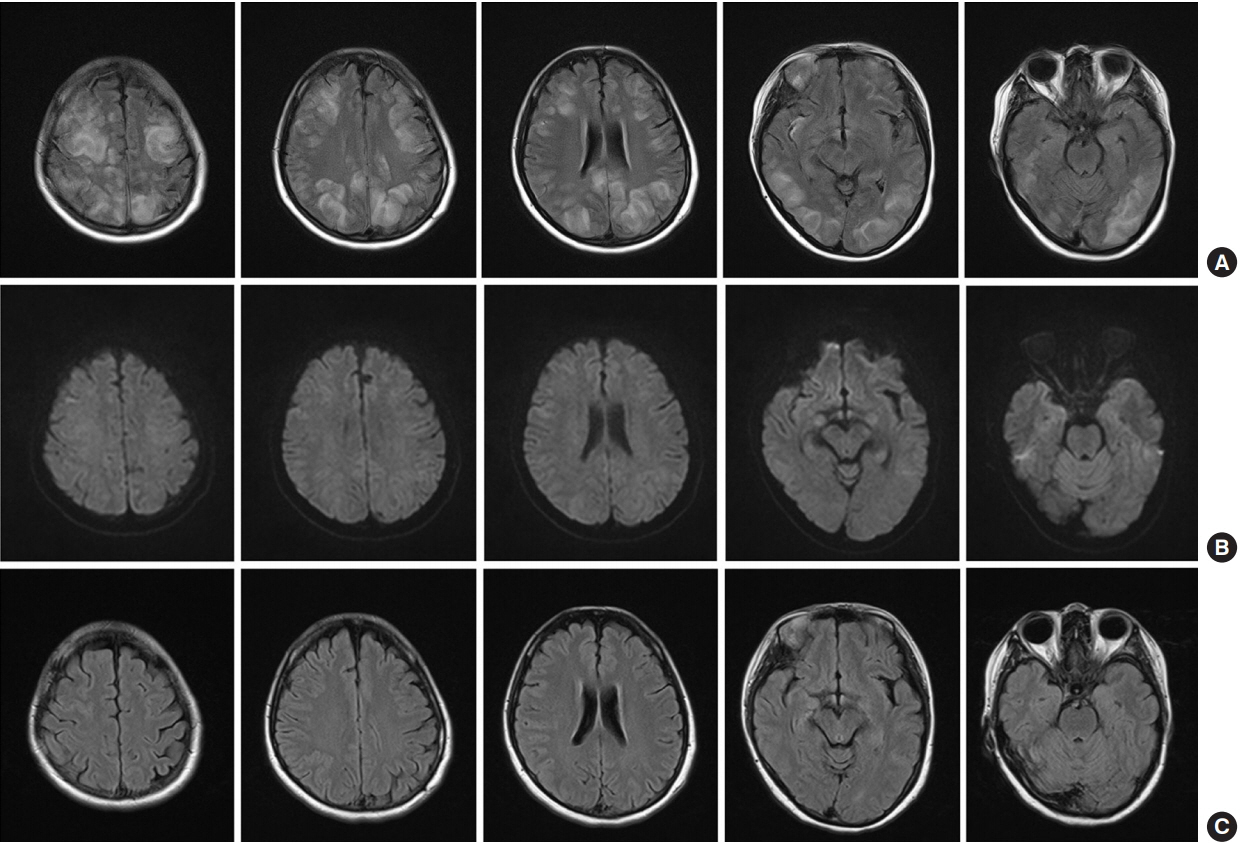Acute Crit Care.
2018 Nov;33(4):282-285. 10.4266/acc.2018.00262.
Posterior Reversible Encephalopathy Syndrome after Hypovolemic Shock Which Is Required Differential Diagnosis with Delirium in the Intensive Care Unit
- Affiliations
-
- 1Department of Critical Care Medicine, Ewha Womans University College of Medicine, Seoul, Korea.
- 2Department of Neurology and Critical Care Medicine, Ewha Womans University College of Medicine, Seoul, Korea.
- 3Department of Anesthesiology and Critical Care Medicine, Ewha Womans University College of Medicine, Seoul, Korea.
- 4Department of Surgery and Critical Care Medicine, Ewha Womans University College of Medicine, Seoul, Korea. hongks@ewha.ac.kr
- KMID: 2441249
- DOI: http://doi.org/10.4266/acc.2018.00262
Abstract
- No abstract available.
MeSH Terms
Figure
Reference
-
References
1. Lio CF, Lee YH, Chan HY, Yu CC, Peng NJ, Chan HP. Posterior reversible encephalopathy syndrome in a postpartum hemorrhagic woman without hypertension: a case report. Medicine (Baltimore). 2017; 96:e6690.2. Singh K, Gupta R, Kamal H, Silvestri NJ, Wolfe GI. Posterior reversible encephalopathy syndrome secondary to blood transfusion. J Clin Neurosci. 2015; 22:592–4.
Article3. Postma IR, Slager S, Kremer HP, de Groot JC, Zeeman GG. Long-term consequences of the posterior reversible encephalopathy syndrome in eclampsia and preeclampsia: a review of the obstetric and nonobstetric literature. Obstet Gynecol Surv. 2014; 69:287–300.4. Reade MC, Finfer S. Sedation and delirium in the intensive care unit. N Engl J Med. 2014; 370:444–54.
Article5. Hong KS, Kim NR, Song SH, Hong G. Cycling of dexmedetomidine may prevent delirium after liver transplantation. Transplant Proc. 2018; 50:1080–2.
Article6. Shi F, Shen L, Shi Y, Shi L, Yang X, Jin Z, et al. Posterior reversible encephalopathy syndrome after postpartum hemorrhage and uterine artery embolization: a case report. Medicine (Baltimore). 2017; 96:e8973.
- Full Text Links
- Actions
-
Cited
- CITED
-
- Close
- Share
- Similar articles
-
- Posterior Reversible Encephalopathy Syndrome
- Delirium in the intensive care unit
- Factors Influencing Intensive Care Unit Nurses’ Competency in Delirium Care in A Tertiary General Hospital
- A case of Posterior Reversible Encephalopathy Syndrome Presenting as Generalized Seizure after Delivery
- Investigation of Delirium Occurrence and Intervention Status in Intensive Care Unit at a Hospital and Perception of Delirium by Medical Staff



